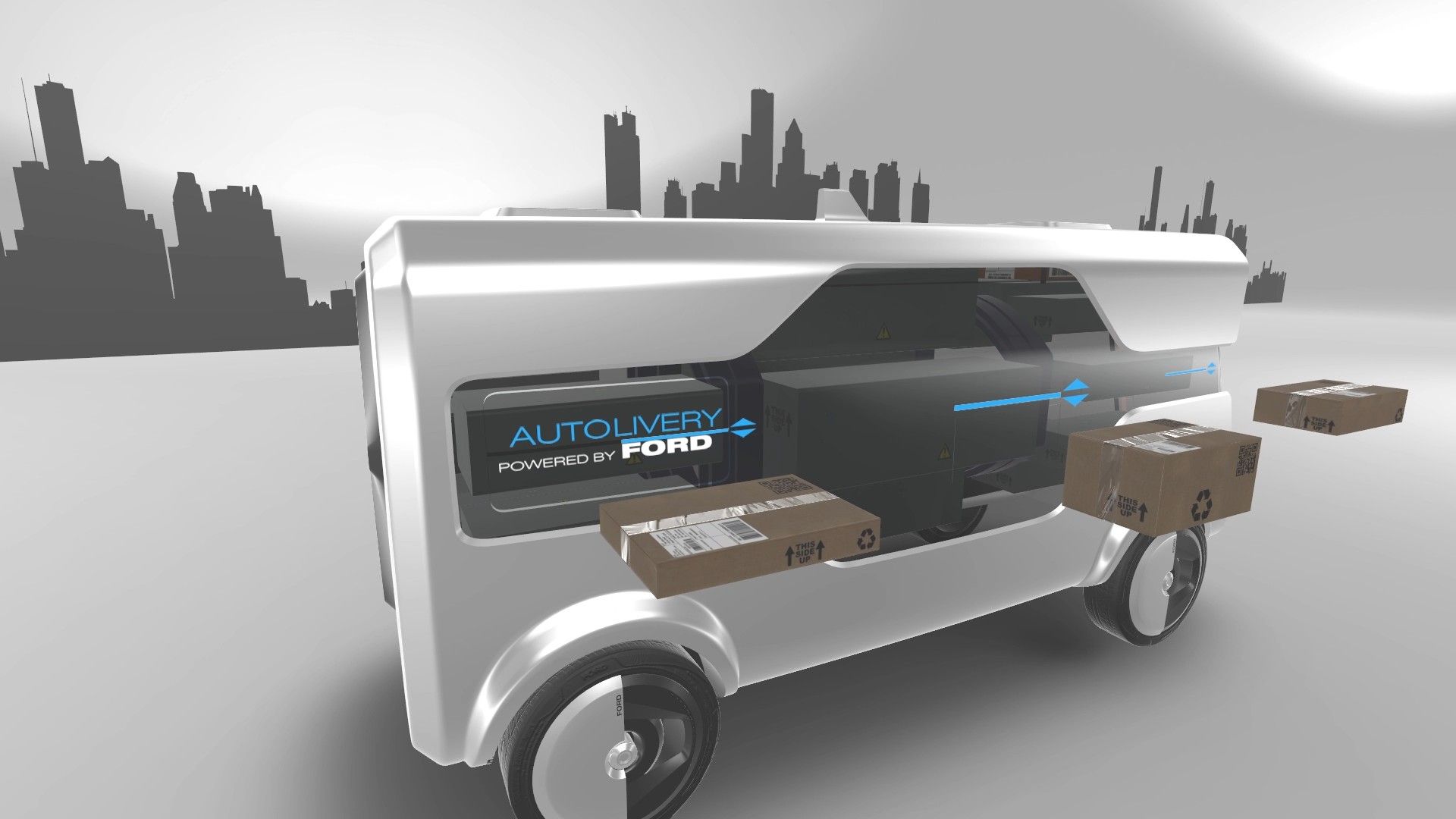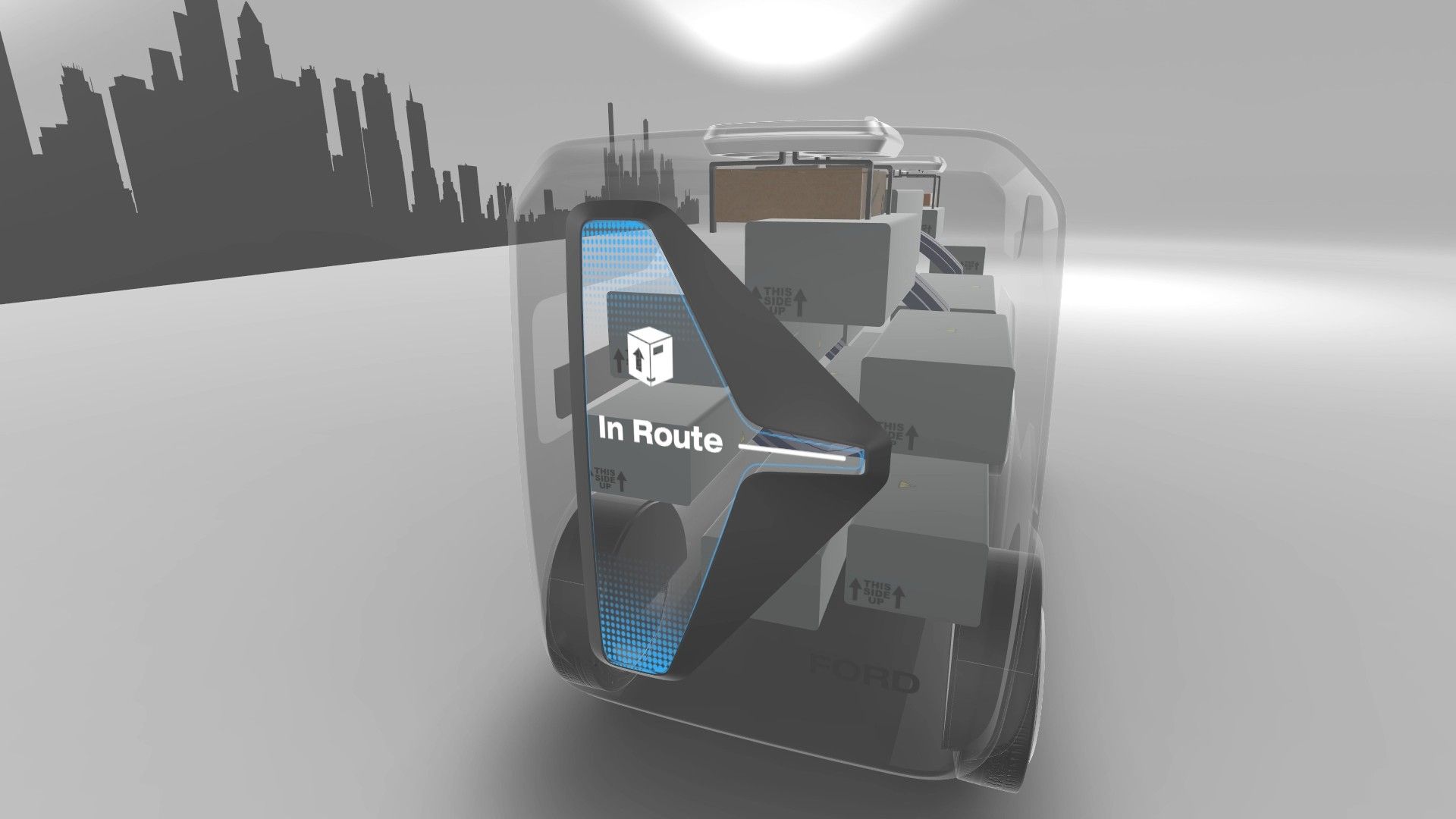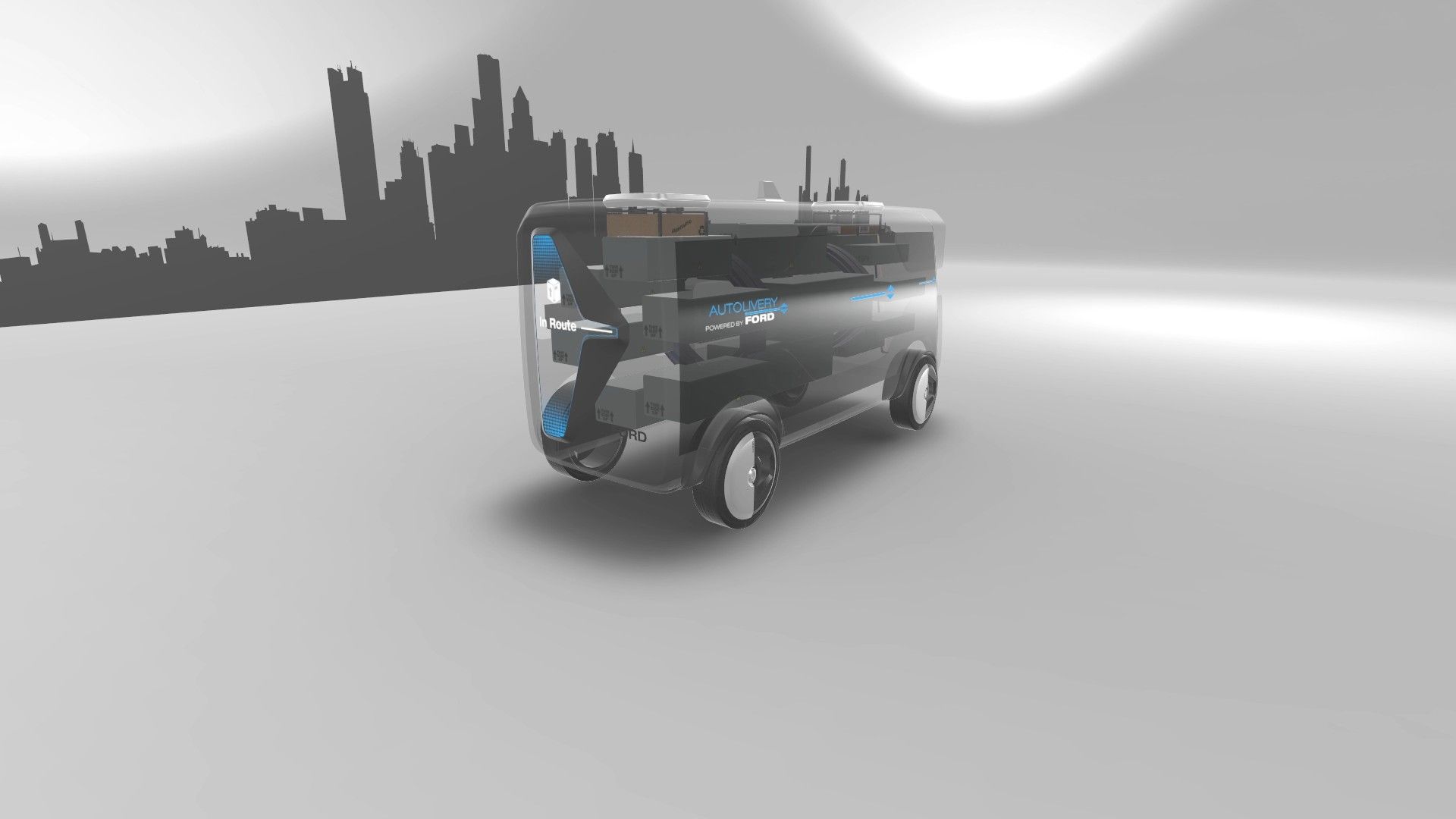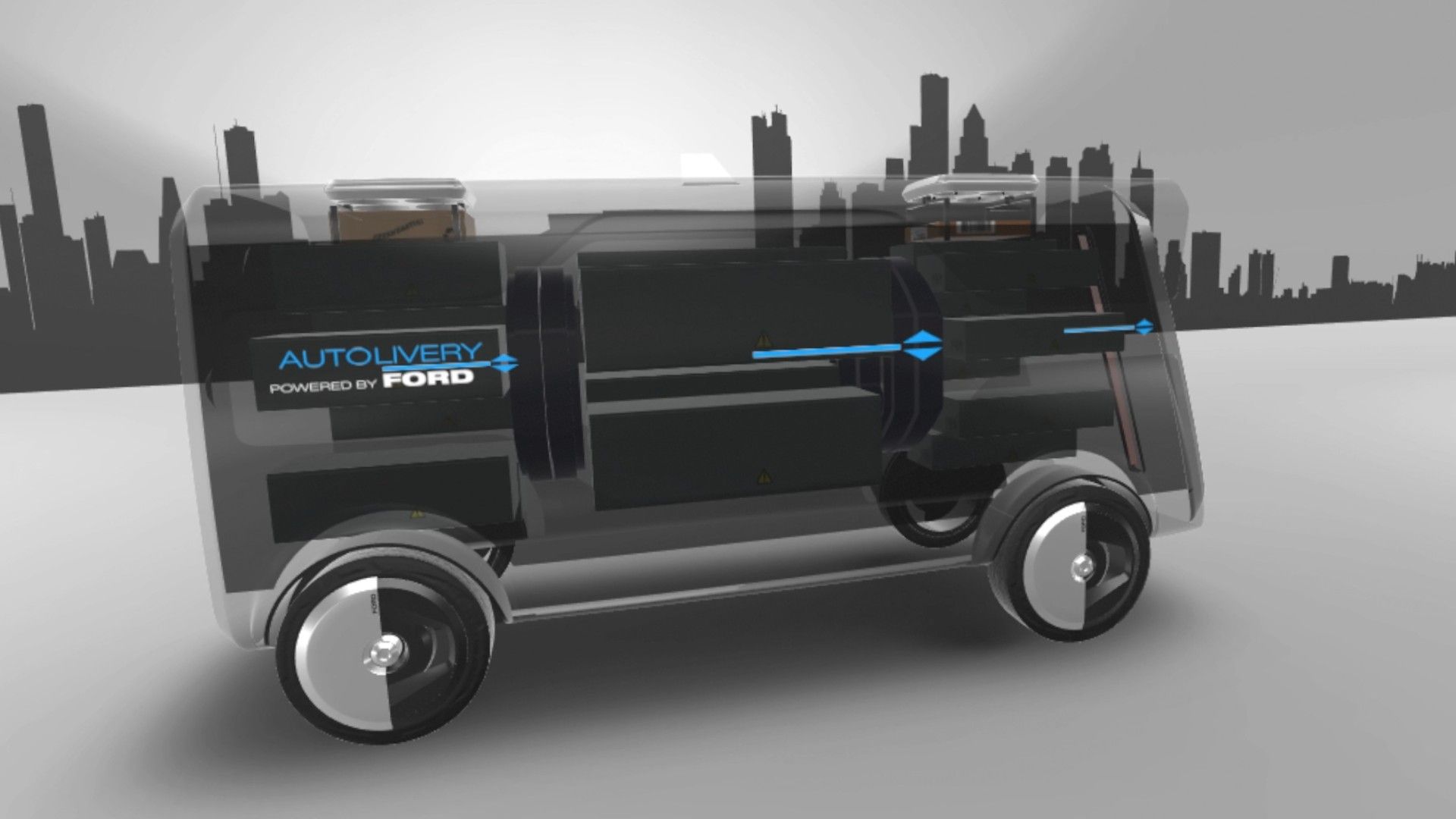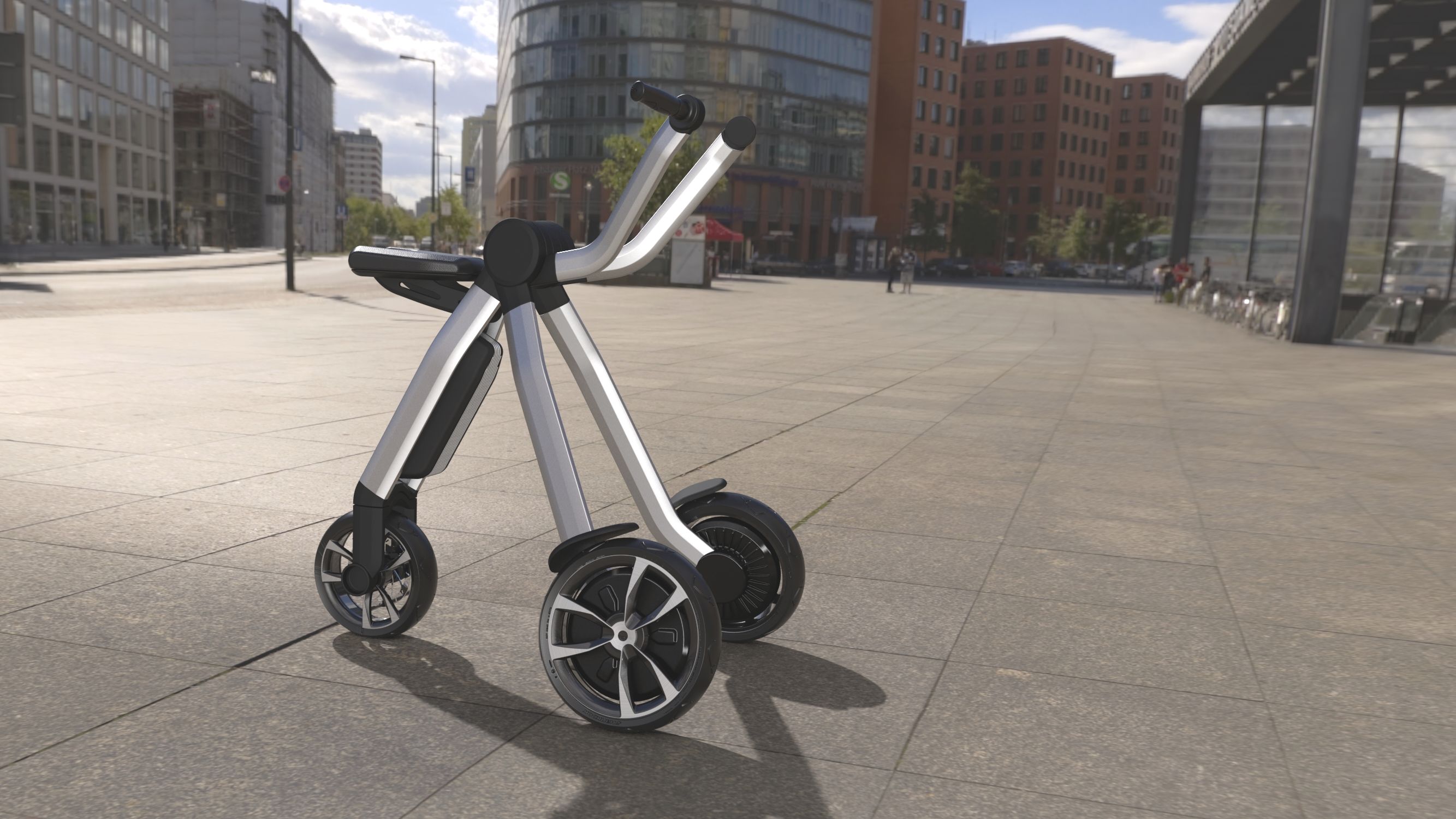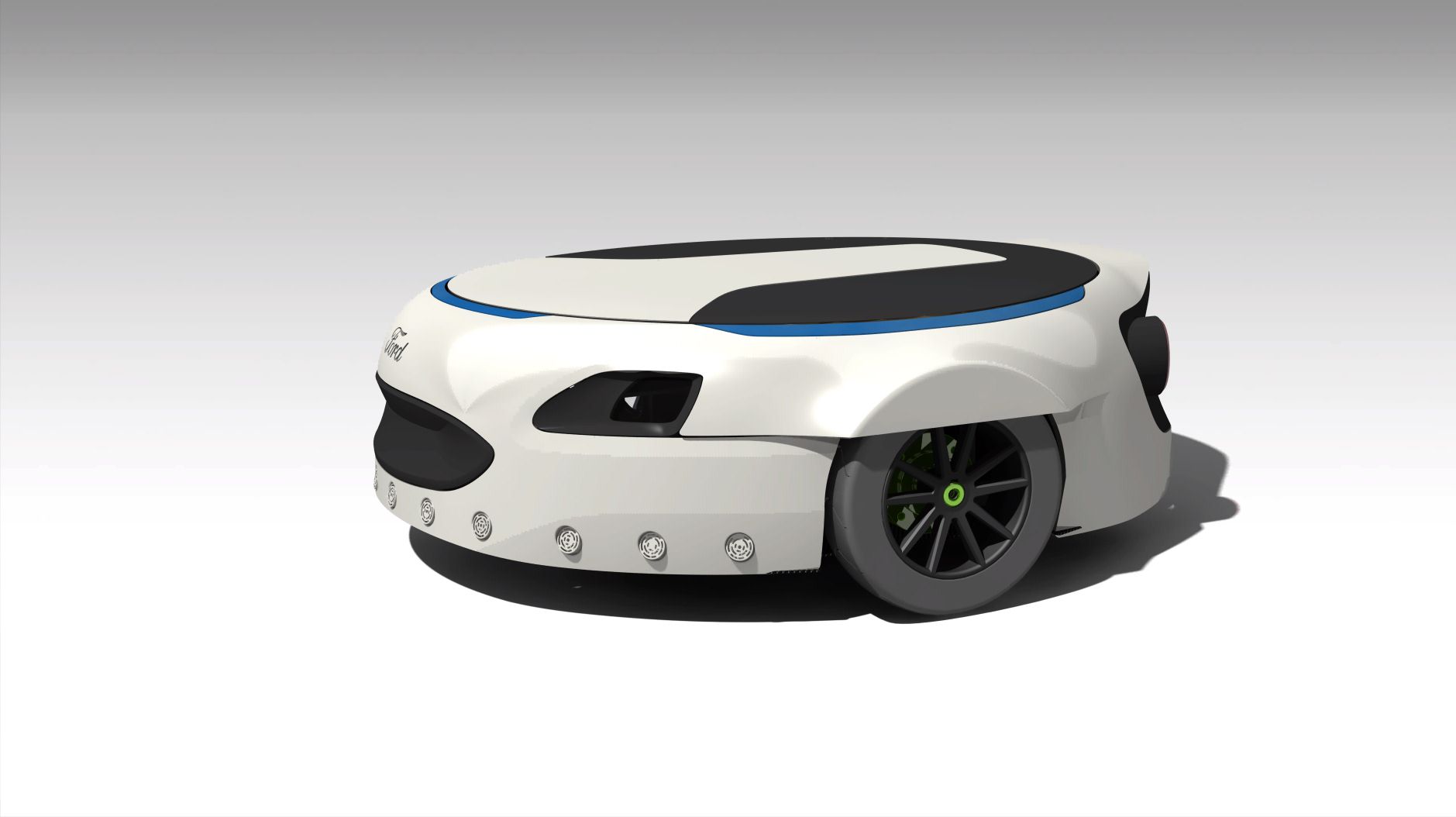Given the direction the auto industry seems to be headed, we're at a point where self-driving cars roaming our streets is far less improbable as it once was. Automakers like Tesla are pioneering this movement, and while the industry itself is still in the embryonic stage of this technological tipping point, enough progress has been made that ideas like self-driving delivery fans like the one Ford presented earlier this year are no longer being scoffed at. Heck, if Amazon can start using drones to deliver packages to its customers, there’s little reason to imagine a future without something like the Blue Oval’s “Autolivery” Concept.
First of all, this concept vehicle isn’t what you’d consider a traditional concept as defined by the auto industry. It’s futuristic in nature, sure, but it doesn’t provide anything concrete that can be adapted to real-world production cars of the future. Instead, the “idea” of the Autolivery Concept is the concept itself. It’s the idea of a self-driving van that works in concert with drones to deliver and transport everyday items on the ground, be it parcels, groceries, or even medical supplies. Think of it as a UPS van without a driver driving it. That’s the ethos of the Autolivery Concept, which takes its name from an amalgam of the words “automatic” and “delivery.” The concept itself is intriguing, in large part because of the potential of its real-world application. There’s no denying that there’s something inherently appealing about a delivery process that’s far more efficient than the ones we have right now and Ford aims for the Autolivery Concept to be a big part of reaching that solution.
Continue after the jump to read the full story.
2017 Ford "Autolivery" Concept
- Make: Array
- Model: 2017 Ford "Autolivery" Concept
- [do not use] Vehicle Model: Array
Exterior
There’s nothing outwardly exciting about the appearance of the Ford Autolivery Concept. It literally looks like a box with four wheels on it, like a technologically advanced crate. One end is slated outwardly though so you could describe it as a van of sorts, too. Based on previews of its functions, the concept van features upward sliding windows on its glass surface where packages can either be put into the van or released back outside where a drone takes it from the curb and delivers it to the customer’s front door.
There’s admittedly a lot of technological wizardry at play here and properly describing it is a little tricky. What I can say, though, is the Ford Autolivery Concept is an intriguing innovation, even if the thought of an army of autonomous vans and drones delivering packages everywhere is still a little jarring to think about.
Interior
How do you even describe the interior of the Autolivery Concept? A good start would be by saying that it doesn’t have any of the traditional equipment you’d normally associate in a standard van. For starters, there are no seats because the van doesn’t need them. There’s no steering wheel either, and forget about finding a dashboard or a center console in it. It might not even have floor mats, which would be ground-breaking. (Right, Toyota?)
All joking aside, the interior of the Autolivery Concept is largely defined by what appears to be an elaborate storage mechanism that stows the packages for delivery. The mechanism is a lot like a vending machine where packages are kept in specific storage units and then these units rotate depending on which packages are all set to be received by the drone for what the delivery industry describes as the “final 15 meters,” from the curb to the customer’s front door.
Drivetrain
The concept itself is autonomous so by definition, it’s not going to be powered by some kind of hybrid powertrain, much less a traditional combustion engine. As far as the specific details of this powertrain are concerned, that’s a question that only Ford, specifically Shanghai-based Ford designers Euishik Bang, James Kuo and Chelsia Lau have the answers to. I do suppose that since this is still a concept, the technology that will be used in powering this concept van is still, at the very least, being developed. That’s not to say that it will arrive at some point in the near future, but since the industry is leaning towards autonomous driving, don’t sleep on it happening. Maybe later than sooner, but still, it could happen down the road.
Competition
This section isn’t typically included in concept reviews, but since the main driving force behind this concept is also being used by other companies, it’s as good a place as any to compare what Ford’s Autolivery Concept is going to be relative to what others are offering, or at least developing in their own time.
Without diving into the specifics of what these entities are offering in the way of autonomous delivery systems, companies like Amazon is already working on drones that will be able to transport packages up to 15 miles from the time a customer orders them online. Likewise, shipping giant UPS is working on its own version of autonomous delivery through similar drones that can carry up to 10 pounds of items for up to 30 minutes. Even ride-sharing company Uber has been working on this front. A company named Otto even demonstrated an autonomous semi-trucks that hauled up to 50,000 cans of Budweiser 12 miles. Considering the size of the truck itself and the possibility of something going awry, Otto did have one human ride with the self-driving semi.
Conclusion
Ford’s Autolivery Concept is still a ways away from being considered real-world, ground-breaking technology, but if the automaker does see the project through, costs, headaches and all, it could very well turn into the kind of technology that will redefine the entire shipping industry as a whole. Whether the project lives long enough to be considered seriously though is another matter entirely. The foundation is there for something special. Now, it’s on Ford to see if this foundation is strong enough to build something on top of it.


